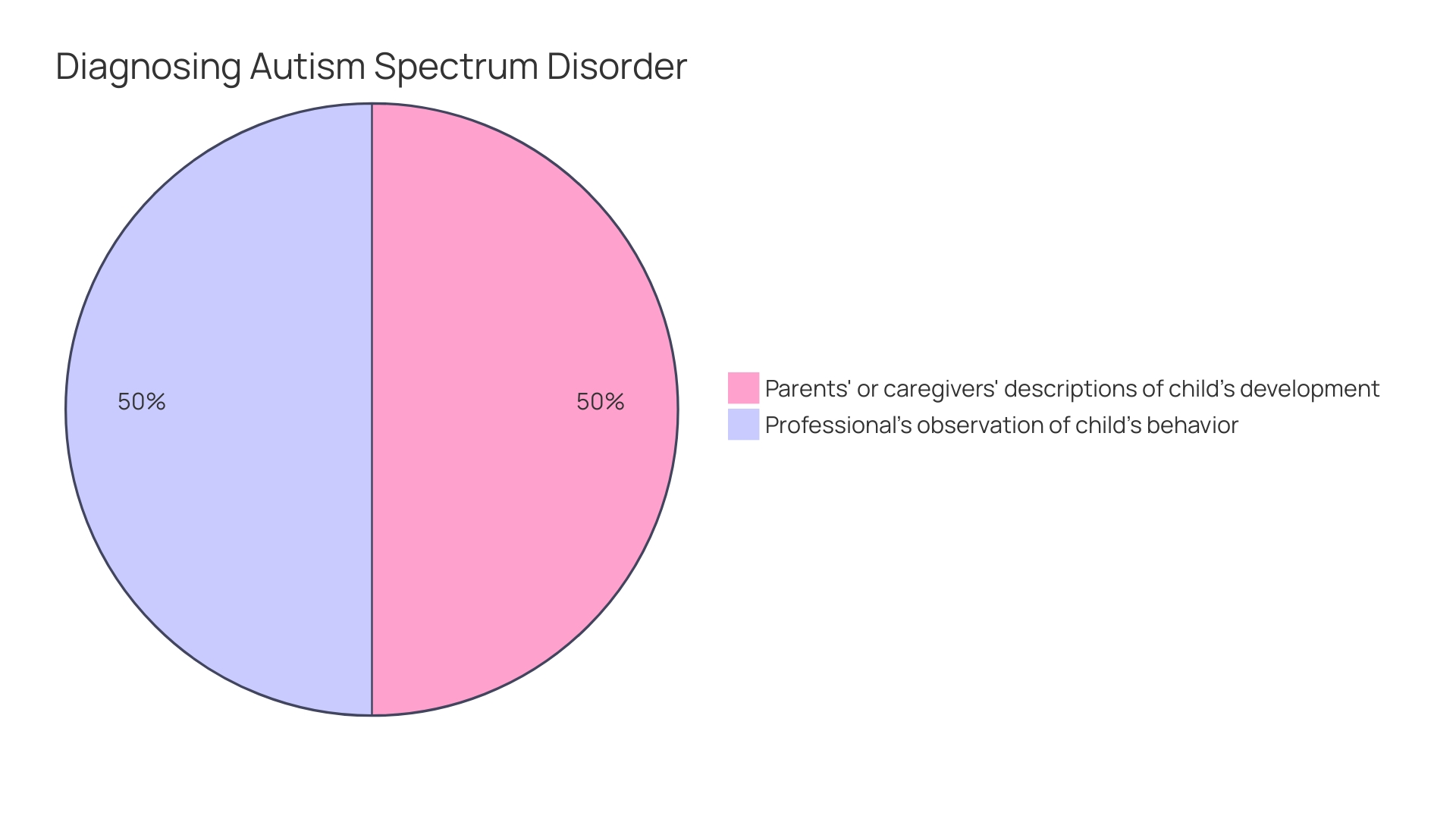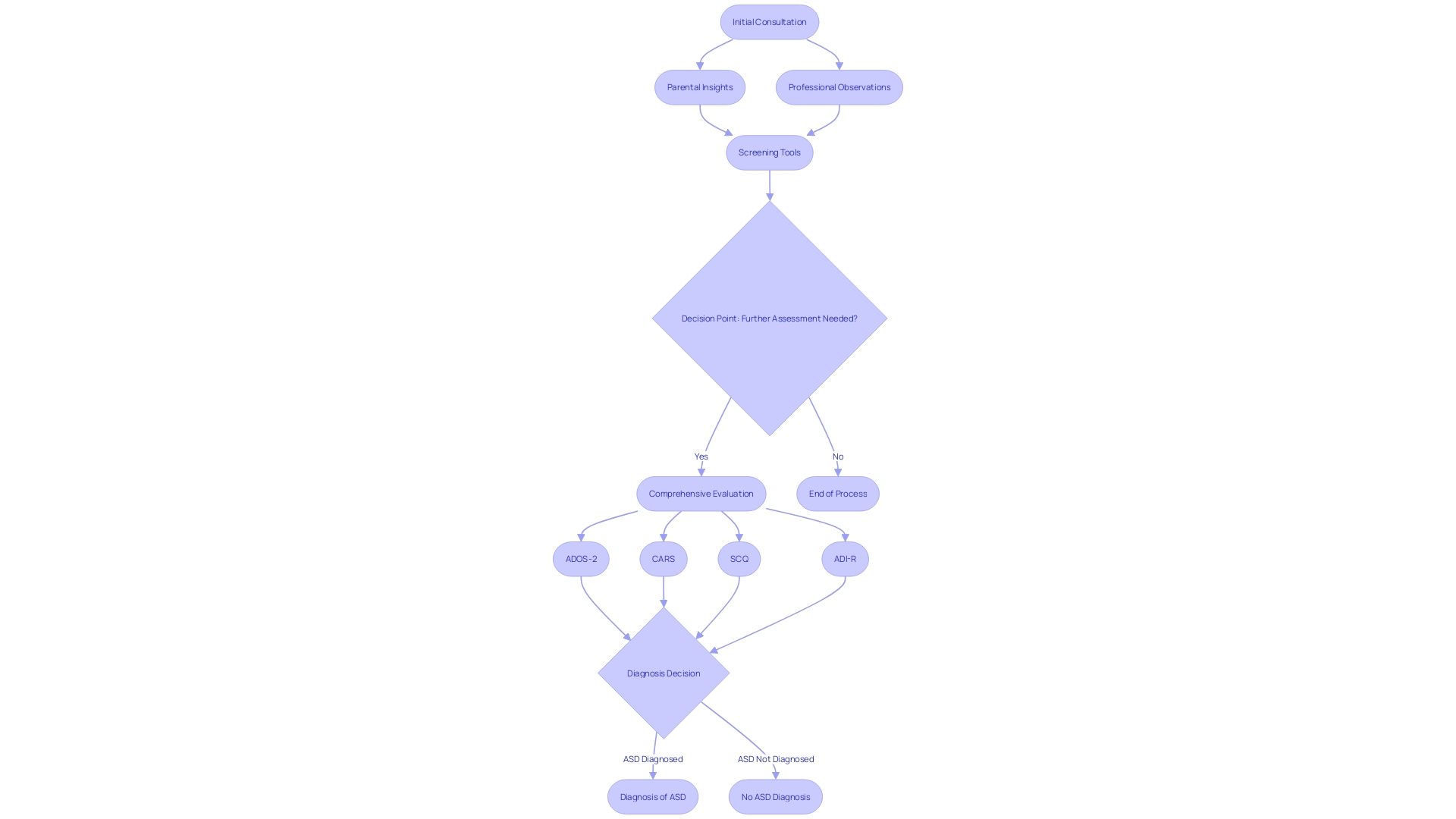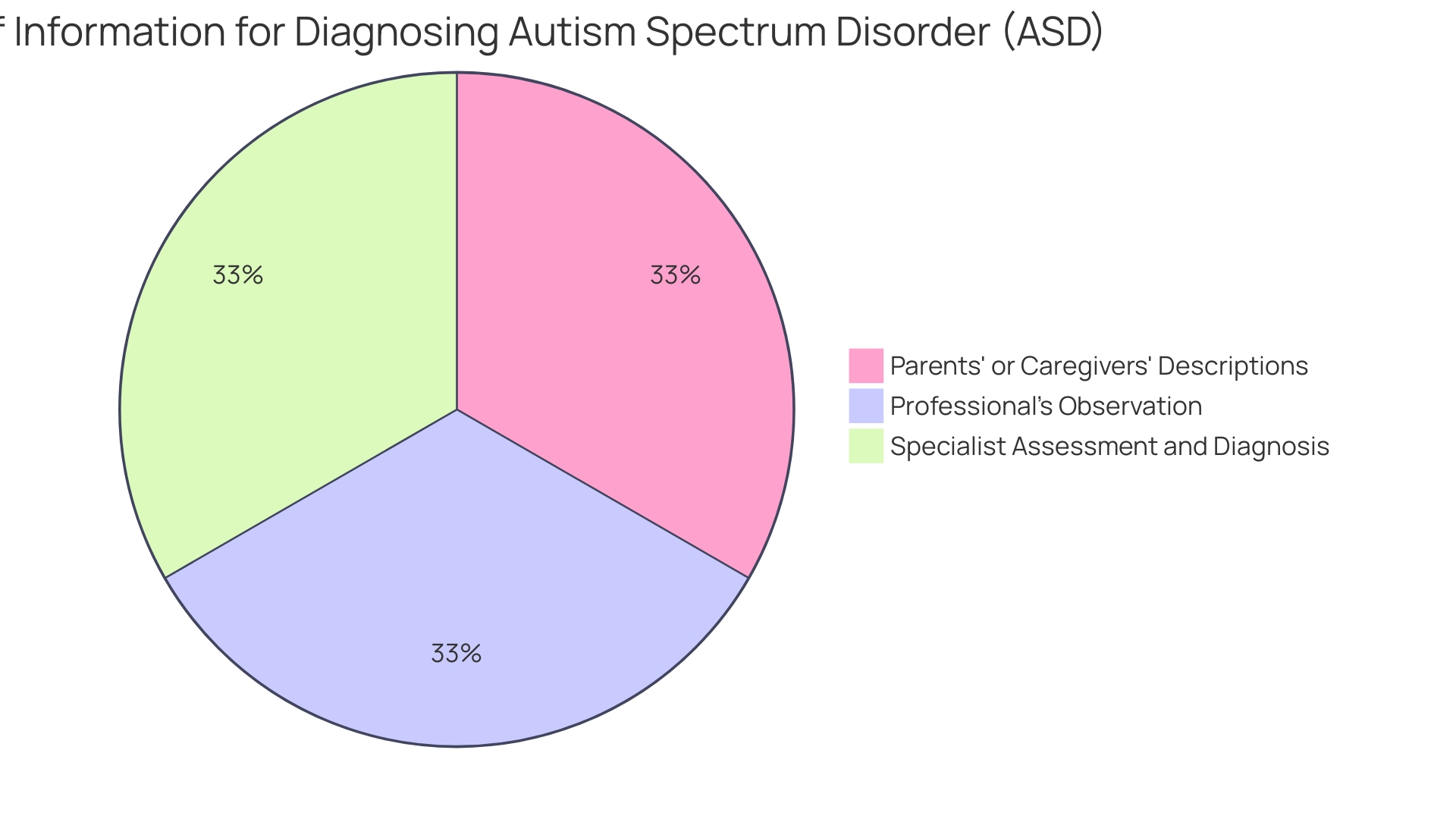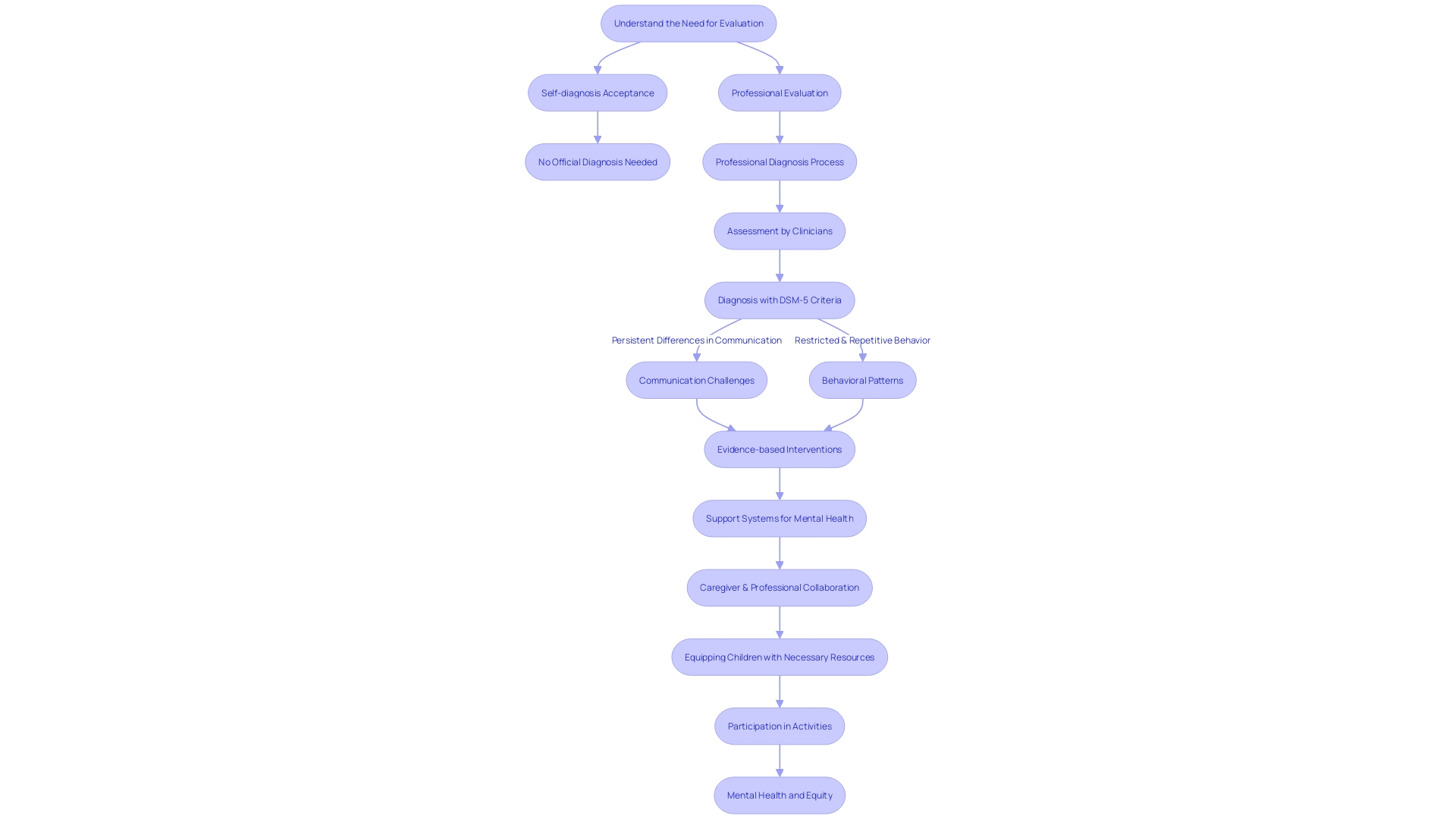Introduction
Autism Spectrum Disorder (ASD) is a lifelong neurodevelopmental condition that affects not only children but also adults. However, diagnosing ASD in adults can be complex and often requires different approaches compared to those used with children. Understanding the nuances of adult autism testing is essential, especially considering the growing acceptance and respect for self-identification within the autistic and neurodivergent communities.
Many adults find the formal diagnostic process inconclusive and opt not to pursue it unless it directly impacts their access to necessary support or personal validation. However, innovative methods, such as the use of artificial intelligence to analyze retinal scans, are emerging and could revolutionize early detection of autism. These advancements in diagnostic tools may lead to more timely and accurate diagnoses, enabling individuals to access the resources and support that can significantly enhance their quality of life.
With approximately 1 in 45 adults in the United States diagnosed with ASD, it is crucial to recognize the signs and symptoms of autism in adults, as early diagnosis can lead to early intervention and support, allowing individuals with autism to lead full and meaningful lives. Efforts to improve the understanding and care of autistic adults are gaining momentum, highlighting the need for equitable medical care and support beyond childhood.
Understanding Autism Testing in Adults
Autism Spectrum Disorder (ASD) is a lifelong neurodevelopmental condition that can profoundly influence a person's social interactions, communication, behaviors, and interests. Although ASD is often thought of in relation to children, it's critical to recognize that it also affects adults, many of whom may have never been diagnosed or were diagnosed much later in life. The process of assessing and diagnosing ASD in adults is complex, as it often requires different approaches compared to those used with children.
Understanding the nuances of adult autism testing is essential, especially considering that self-identification within the autistic and neurodivergent communities is accepted and respected. Many adults find the formal diagnostic process inconclusive and opt not to pursue it unless it directly impacts their access to necessary support or personal validation.
Innovative methods, such as the use of artificial intelligence to analyze retinal scans, are emerging and could revolutionize early detection of autism. Studies have shown that this technology has the potential to not only identify the presence of autism but also gauge its severity. Such advancements in diagnostic tools may lead to more timely and accurate diagnosis, enabling individuals to access the resources and support that can significantly enhance their quality of life.
The latest statistics indicate that approximately 1 in 45 adults in the United States have been diagnosed with ASD. This underscores the importance of recognizing the signs and symptoms of autism in adults, which include challenges with social communication and repetitive behaviors. Early diagnosis is crucial, as it can lead to early intervention and support, allowing individuals with autism to lead full and meaningful lives.
Efforts to improve the understanding and care of autistic adults are gaining momentum. Projects like AutSPACEs, which is co-designed by autistic individuals, aim to gather qualitative data on the experiences of autistic people and influence positive changes in healthcare systems. Such initiatives highlight the need for equitable medical care for autistic adults and the continuation of support beyond childhood.
Challenges in Diagnosing ASD in Adults
Assessing Autism Spectrum Disorder (ASD) in adults can be considerably more intricate than in children. As adults often adapt over time, developing strategies to manage or conceal their symptoms, pinpointing ASD characteristics becomes a nuanced task. This adaptive behavior, along with a general deficit in adult ASD recognition among healthcare professionals, may lead to challenges in diagnosis. Recognizing these obstacles is essential for accurate assessment and support. The neurodivergent community advocates for the validity of self-diagnosis, especially when formal medical evaluations may result in inconclusive findings. An official diagnosis may not be necessary for all, particularly if it doesn't impact the support required. However, for those seeking validation or explanations for their lived experiences, understanding the signs of autism, such as difficulties with social communication and repetitive behaviors, can be crucial. With statistics indicating that 1 in 45 U.S. adults are diagnosed with ASD, there's a growing awareness and need for appropriate medical and psychological care that acknowledges the unique needs of autistic adults.

Common Diagnostic Tools for Adult ASD Evaluation
Autism Spectrum Disorder (ASD) diagnosis in adults often involves a nuanced approach using multiple diagnostic tools. These tools encompass structured interviews, detailed questionnaires, and direct observations, all aimed at understanding an individual's unique developmental history, social communication patterns, and potential repetitive behaviors. Key to an accurate ASD diagnosis is the interpretation of these tools, which delve into the intricacies of adult behavior and experiences often overlooked in pediatric assessments.
For adults questioning their place on the spectrum, formal diagnosis is not always essential. Many in the autistic and neurodivergent communities embrace self-identification, recognizing the imperfections in the medical model and the often inconclusive results from professional testing. The pursuit of an official diagnosis may hinge on personal reasons or the need for specific supports.
Moreover, it's crucial to acknowledge that the therapeutic needs of autistic adults, such as those with anxiety or depression, may not diverge significantly from neurotypical individuals. The key difference lies in the understanding and accommodation of the distinct needs of autistic adults. Establishing trust and recognizing the strengths of autistic patients can pave the way for more inclusive care. This inclusive approach is reflected in the wider movement towards equitable support for individuals with disabilities, ensuring they can participate fully in all aspects of life and have their needs met effectively.
Exciting developments in the field, such as NeuroQure's recent advancements, are promising to revolutionize early ASD detection. With a focus on addressing diagnostic delays, new technologies are emerging that could identify ASD mere weeks after birth, significantly shortening the often years-long journey to diagnosis. This progress could prove transformative, especially for families with an increased genetic predisposition to ASD, providing much-needed answers and access to early intervention services.
The Role of ADOS-2 in Adult ASD Diagnosis
The Autism Diagnostic Observation Schedule, Second Edition (ADOS-2) is a critical instrument for assessing Autism Spectrum Disorder (ASD) across ages, providing a comprehensive evaluation of an individual's communication abilities and social interaction. Through a sequence of structured tasks, ADOS-2 helps to discern social and communicative behavior patterns indicative of ASD. The value of this tool is underscored by the fact that, while self-diagnosis within the autistic community is a respected practice for personal identification, a formal diagnosis can be important for accessing certain services, asserting one's identity, and fostering understanding among others.
It's crucial to acknowledge that for many adults, navigating the medical system for an autism diagnosis can result in inconclusive outcomes. This can be attributed to limitations within the current diagnostic models, which may not adequately capture the diverse manifestations of autism in adults. Despite this, obtaining an official diagnosis can serve as a validation that empowers individuals to advocate for their needs and educates those around them.
Organizations like The Autism Community in Action (TACA) emphasize the significance of early and accurate diagnosis, as it can lead to timely interventions and improved prognosis. The push for diagnostic tools that can recognize ASD at the earliest possible stage reflects the urgency for enhanced support for affected families. On the research front, studies consistently reveal that intervention research often faces design challenges, which impacts the reliability of findings related to the effectiveness and potential harm of interventions for autistic individuals.
Further, mental health professionals stress the importance of understanding the unique therapeutic needs of autistic adults, which may not substantially differ from others with similar conditions. However, autistic adults often encounter barriers in receiving care, highlighting the necessity for increased awareness and training among practitioners to better serve this population. The conversation around autism diagnosis is complex, with research indicating an elevated risk of co-occurring health conditions and a reduced life expectancy for autistic individuals, reinforcing the need for comprehensive healthcare and support.
Limitations of ADOS-2 in Clinically Complex Settings
The Autism Diagnostic Observation Schedule, Second Edition (ADOS-2), while a pivotal instrument in ASD diagnosis, does not encapsulate the full spectrum of behaviors and characteristics of the disorder, particularly in adults. This is a critical point considering the diversity of autism manifestations and the importance of a multifaceted approach to evaluation. For example, recent advancements in machine learning, such as the AutMedAI model, have demonstrated up to 80% accuracy in identifying children with autism by analyzing a combination of early-life parameters. These novel diagnostic tools are invaluable in complementing traditional assessments like ADOS-2, especially since they do not require extensive assessments and can identify patterns that may be missed in clinical settings.
Furthermore, it's essential to recognize that each individual with autism is unique, and their support needs may vary greatly. The concept of supported decision-making empowers individuals to make their own choices with the aid of trusted supporters. This approach aligns with the growing emphasis on respecting individuals with autism and engaging them directly in decisions about interventions that affect their lives. Critiques from within the autism community have highlighted the necessity for research that respects the dignity of autistic individuals, underscoring the importance of ethically conducted intervention studies.
In light of these insights, it is apparent that while ADOS-2 is a significant component of the diagnostic process, it should be part of a broader array of assessments. Clinicians and researchers are encouraged to integrate innovative diagnostic models and respect the principles of supported decision-making to ensure a comprehensive evaluation that truly reflects the individual's needs and upholds their autonomy.
Comprehensive Assessment Strategies for Adults
A multi-faceted approach is essential for a thorough evaluation of adults who may be on the autism spectrum. This entails not only detailed interviews and self-report questionnaires but also cognitive assessments and observations within their everyday environments. Diverse assessment tools enable clinicians to paint a holistic picture of an individual's abilities, impediments, and requirements. Statistics suggest that autism is more common than many realize, with Autistica reporting 1 in 70 people being autistic in the UK, and a significant number of those are of working age seeking employment. However, only about 30% of working-age autistic individuals are employed, which is lower than the average for both disabled and non-disabled people. Moreover, autistic individuals face substantial pay disparities, receiving a third less in wages compared to non-disabled counterparts. Recognizing these challenges, initiatives have been proposed to enhance awareness, reduce stigma, and optimize the unique contributions of autistic individuals in the workforce. Supported decision-making is one such initiative, encouraging individuals to make their own informed decisions with the assistance of trusted supporters. Meanwhile, the US Preventive Services Task Force emphasizes the importance of individualized clinical decision-making that incorporates more than just evidence, a principle that aligns with the nuanced needs of the autism community. Such comprehensive evaluations are vital, as they inform the necessary support and accommodations to help autistic individuals thrive, particularly in professional settings.
Importance of Developmental History in Adult Diagnosis
In the nuanced journey to diagnose Autism Spectrum Disorder (ASD), clinicians recognize the importance of a comprehensive developmental history, especially when assessing adults. Such an evaluation delves into early developmental milestones, addressing aspects of social communication and behavioral patterns. It's essential to obtain insights from a variety of sources, including family members, past caregivers, and educational records. This multifaceted approach is vital because, as highlighted by the National Institutes of Health, a singular perspective may not capture the complexity of the individual's experiences.
Experts like David Lynch, PhD, and Liliana Valvano, LMSW, from Columbia's Lieber Recovery Clinic, stress the diversity of autism presentations, which can sometimes lead to late diagnoses. They underline the importance of personalized, neuro-inclusive, and gender-affirming care. Furthermore, the story of Heather Florio, who was diagnosed at 41, underscores the life-changing impact of understanding one's neurodivergence later in life. The Autism Community in Action (TACA) emphasizes the transformative potential of early diagnosis and intervention.
While self-diagnosis is a respected avenue within the autistic and neurodivergent community, a formal diagnosis can be pivotal for some, enabling access to tailored support systems. However, securing a diagnosis in adulthood can present challenges, including the scarcity of professionals trained to evaluate adults. Ensuring ethical standards and informed consent, as per guidelines like those of the Danish Data Protection Agency, is integral to the process, safeguarding the privacy and rights of individuals undergoing assessment.
The evolution of diagnostic criteria over the years, documented in publications like the DSM, has contributed to the increasing prevalence rates of ASD. What started as a condition initially described with a prevalence of 4.5 in 10,000 has seen its diagnostic parameters expand, resulting in more individuals being recognized and diagnosed. This historical context is crucial in understanding the shifting landscape of ASD diagnosis and the continuous efforts to refine and improve the process.

Unique Considerations for Diagnosing Females with ASD
Recognizing autism in females requires careful attention to unique patterns of social communication and behavior. Females with Autism Spectrum Disorder (ASD) may not exhibit the same traits as their male counterparts, often leading to underdiagnosis. For instance, they might engage in more socially acceptable forms of repetitive behavior or have subtle difficulties with social communication that can be easily overlooked. Clinical neuropsychologist Susan Epstein, PhD, highlights the challenges with the original diagnostic criteria that were not designed to capture the nuanced presentation of autism in females. Compounded by the ability of many girls and women to mask symptoms such as making eye contact or initiating conversation, this leads to a disparity in diagnosis rates between males and females. Additionally, females may show different forms of emotional regulation and self-harm behaviors, including eating disorders, which require clinicians to adapt their diagnostic approach. The evolution of diagnostic criteria has seen a broadening of the characteristics identified with ASD, acknowledging that symptoms can vary significantly from person to person. With a rising prevalence of autism diagnosis due to these changes, it is crucial for healthcare professionals to recognize the diversity of autism presentations and ensure that all individuals receive the support and services they need.

Steps to Get Evaluated for ASD as an Adult
Navigating the journey towards understanding oneself can be complex, particularly for adults questioning whether they may have Autism Spectrum Disorder (ASD). The community of individuals who are autistic or neurodivergent often accepts self-diagnosis, recognizing the challenges and limitations inherent in the medical testing system for autism. Many adults find that formal testing may result in inconclusive outcomes, leading some to question the necessity of undergoing an evaluation if it doesn't directly impact the support they require.
For individuals who decide to seek a formal diagnosis, the reasoning can be multifaceted. One may choose to pursue it for validation, to affirm their experiences without facing skepticism from others. Others might do so to facilitate understanding and acceptance among friends and family, or to access particular services and accommodations that require an official diagnosis.
Statistics show that in the UK alone, around 1 in 70 people are autistic. However, the employment rate for autistic adults is significantly lower than that of their non-disabled peers. Initiatives aimed at improving awareness and reducing stigma are crucial for leveraging the unique talents of autistic individuals in the workplace.
In the broader context, the Autism Community in Action (TACA) emphasizes the treatability of autism and the importance of early and accurate diagnosis. With organizations like NeuroQure working to develop diagnostic tools that could detect ASD shortly after birth, the goal is to minimize the often lengthy and stressful process of obtaining a diagnosis.
When considering an evaluation for ASD, adults should consult with healthcare professionals who specialize in autism. These experts can provide guidance on the most suitable assessment tools and strategies, keeping in mind that the pursuit of a diagnosis is a personal choice and not a necessity for self-identification as autistic.
Finding Qualified Clinicians for Adult ASD Evaluation
Navigating the landscape of autism spectrum disorder (ASD) diagnosis as an adult can be complex and, at times, overwhelming. It's important to understand that while a formal diagnosis can provide clarity and access to resources, the autistic and neurodivergent community also recognizes the validity of self-diagnosis, particularly in light of the challenges associated with the medical testing model for autism. Many adults find themselves with inconclusive test results, and the decision to seek an official diagnosis is a personal one that may be influenced by the need for formal recognition or understanding from others.
For those who do decide to pursue a professional evaluation, finding a clinician with expertise in adult ASD is crucial. The process involves a comprehensive review of developmental history and behaviors, and it often requires the completion of detailed self-report questionnaires. This thorough approach is necessary for accurate diagnosis but can present barriers, including a shortage of qualified professionals who can assess adults. Indeed, while there is an increasing awareness of childhood autism, the adult population with ASD is often overlooked, leading to a gap in available services post-high school and a lack of attention to their medical care needs.
The expanding recognition of this issue is evidenced by initiatives such as the one led by Christopher McDougle, MD, from Harvard Medical School, which seeks to improve autism care for adults by educating healthcare providers. Moreover, the existence of a behavioral health workforce that extends beyond psychiatrists and psychologists to include social workers, counselors, and therapists is a reminder of the diverse professional expertise available to those seeking guidance. The importance of this workforce is underscored by recent policy reports, such as the one from the State Exchange on Employment and Disability (SEED), highlighting the need to address the provider shortage in behavioral health services.
As you seek recommendations for clinicians, consider healthcare providers, support groups, and online communities as valuable resources. Their collective experiences and knowledge can guide you towards professionals who are equipped to provide a comprehensive and empathetic evaluation, ensuring that your journey towards understanding your place on the spectrum is supported every step of the way.
What to Expect During an Adult ASD Evaluation
Navigating the journey of an adult ASD evaluation can seem daunting, but understanding the steps involved demystifies the process and prepares individuals for what lies ahead. The evaluation is multifaceted; it includes a series of interviews, self-report questionnaires, cognitive assessments, and behavioral observations. Professionals seek to understand the individual's developmental history and social interaction patterns, as well as any repetitive behaviors that may be present. Importantly, the evaluation may extend to gathering insights from family members or friends to provide a more comprehensive understanding of the individual's experiences.
The path to an adult ASD diagnosis is not always straightforward, with some opting for self-identification within the supportive autistic and neurodivergent communities. In the United States, 1 in 45 adults are diagnosed with autism spectrum disorder (ASD), yet many remain undiagnosed or misdiagnosed—potentially due to the challenges of identifying the nuanced signs of autism in adulthood, which mirror those in childhood, such as difficulties in social communication and restricted, repetitive behaviors.
The importance of a timely and accurate diagnosis is underscored by organizations like The Autism Community in Action (TACA), which emphasizes that treatment, including behavioral therapies, is most effective when started early. Despite the challenges in diagnosing adults, including finding capable evaluators, the process can be life-changing, as evidenced by individuals like Heather Florio who, diagnosed at 41, found self-acceptance through her diagnosis.
While a formal diagnosis is not mandatory to identify as autistic, it can unlock vital resources and support. The Interagency Autism Coordinating Committee (IACC) and other federal entities collaborate with the autism community to enhance research and services, reflecting the need for comprehensive diagnostic procedures that respect the experiences of those on the spectrum. This collaborative approach is essential in advancing understanding and support for autism, ensuring that each person's unique journey is acknowledged and valued.
Interpreting Results and Next Steps
Understanding the results of an autism evaluation is a critical step toward supporting a child's unique needs. Upon completion of the assessment, clinicians will engage with parents to unpack the diagnosis and its implications. This dialogue is an opportunity to align on the child's strengths and challenges and to determine evidence-based interventions, therapies, and support systems. Dr. David (Dan) R. Offord's vision of a fair race for all children, including those with disabilities, is central to this process. It's about equipping caregivers with the resources needed to foster their children's mental health and ensure equitable opportunities for participation in school, home, and leisure activities.
As the prevalence of Autism Spectrum Disorder (ASD) is presently estimated to affect as many as 1 in 36 children, the importance of a nuanced understanding of the condition is paramount. Autism is characterized by a variety of behaviors and affects individuals differently, necessitating personalized support strategies. The American Psychiatric Association's DSM-5 outlines the diagnostic criteria, focusing on persistent differences in social interaction, communication, and repetitive behaviors.
The choice of interventions is informed by the latest research, including randomized-controlled trials, which are now favored over quasi-experimental studies for their robustness in evaluating intervention efficacy. The recommendations by the Interagency Autism Coordinating Committee (IACC), comprising a diverse group of stakeholders, further guide best practices in autism services and research.
In a landscape where diverse study approaches and the multiplicity of opinions on support strategies exist, it’s crucial for parents to be well-informed and actively involved in the decision-making process for their child's care. Navigating the complexities of support services is a shared journey between families and professionals, aimed at enhancing the well-being and full participation of children with ASD in all facets of life.

Conclusion
In conclusion, diagnosing Autism Spectrum Disorder (ASD) in adults can be complex, but innovative methods like the use of artificial intelligence for early detection show promise. Early diagnosis is crucial, as it enables individuals to access timely support and resources that enhance their quality of life.
Understanding the signs and symptoms of autism in adults is essential, as it allows for early intervention and support. Efforts to improve the understanding and care of autistic adults are gaining momentum, emphasizing the need for equitable medical care and support beyond childhood.
While formal diagnosis is not always necessary, the neurodivergent community recognizes the validity of self-identification. Diagnostic tools for adult ASD evaluation include structured interviews, questionnaires, and direct observations. Interpreting these tools in the context of adult behavior is crucial for accurate assessment.
The Autism Diagnostic Observation Schedule, Second Edition (ADOS-2), is a critical instrument for ASD assessment across ages. While self-diagnosis is respected, a formal diagnosis can provide validation and access to specific services. Navigating the medical system for an autism diagnosis as an adult can be challenging but is important for understanding and support.
Comprehensive assessment strategies, including interviews, questionnaires, and observations, are vital for evaluating adults on the autism spectrum. Recognizing the challenges faced by autistic adults in employment, initiatives are being proposed to enhance awareness and reduce stigma.
Finding qualified clinicians who specialize in autism is crucial for accurate evaluations. Healthcare providers, support groups, and online communities can serve as valuable resources in this process. A comprehensive and empathetic evaluation supports individuals on their journey of self-discovery.
In conclusion, a personalized and comprehensive approach to diagnosing and supporting adults with ASD is essential. Utilizing innovative diagnostic methods and involving qualified clinicians can lead to timely and accurate diagnoses, enabling individuals to access the necessary support for a fulfilling life. Promoting inclusivity and acceptance within the healthcare system and society at large is crucial for the well-being of individuals with autism.




